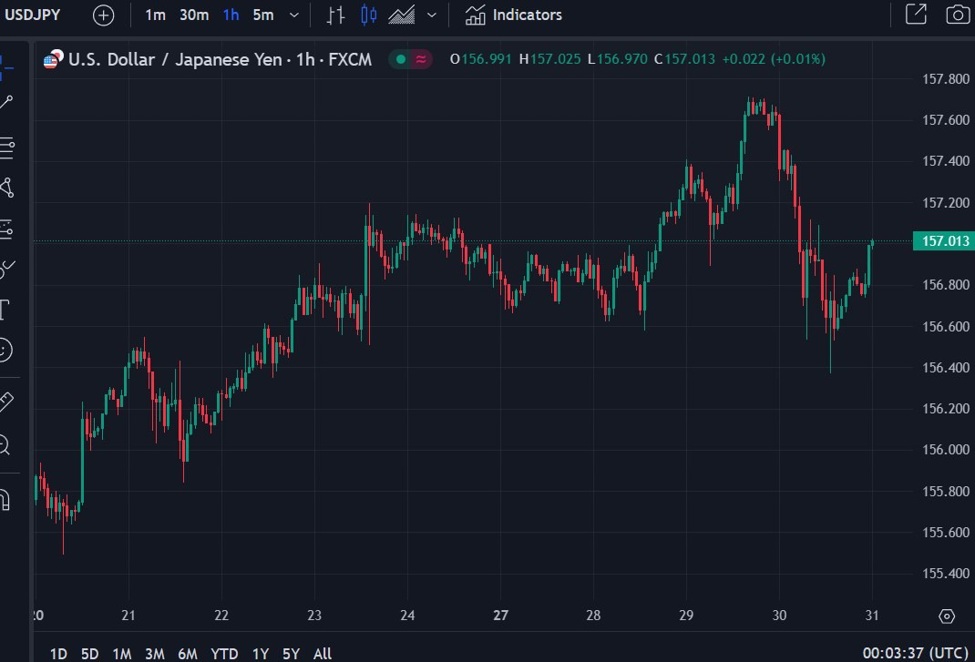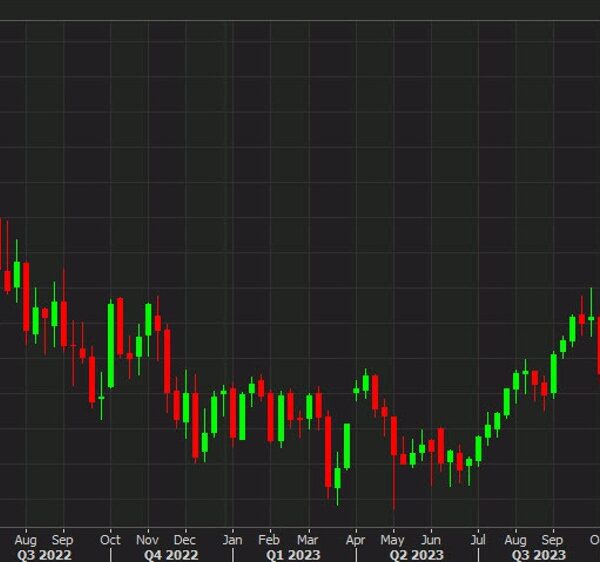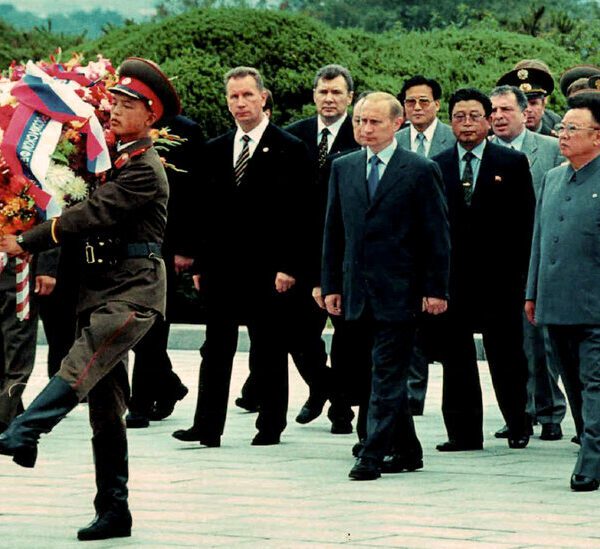We’re at a crucial moment in the Ukraine war. After Congress’s monthslong delay in approving additional American aid — and the failure of the Ukrainian counteroffensive last year — Ukraine finds itself on the defensive. Russia is advancing at a number of points on the front. I wanted to get an unvarnished evaluation of the military realities of the conflict, and for that I could think of few people better positioned to provide insight than Frederick and Kimberly Kagan.
He is the director of the American Enterprise Institute’s Critical Threats Project and was one of the intellectual architects of America’s successful surge counterinsurgency strategy in Iraq in 2007. She wrote a military history of the surge and is the founder and president of the Institute for the Study of War, which is producing in-depth, real-time analysis of the battlefield in Ukraine for the public and government leaders.
I found their observations about what is arguably the most consequential military conflict of the 21st century invaluable. I hope you find them as instructive as I did. This conversation has been lightly edited for length and clarity.
David French: The news from Ukraine has been grim for months. After the failure of the Ukrainian counteroffensive last year and delays in American aid, we’ve seen Russians make gains on the ground and in the air. Vladimir Putin seems optimistic about the course of the war, and Ukraine is bracing for a new Russian offensive in northeast Ukraine. What is the state of the war? Does Russia have the battlefield momentum?
Kimberly Kagan: The monthslong delay in U.S. military assistance allowed Russia to take the initiative and launch offensives across the theater in Ukraine. The aid is flowing again, but it is going to take a while for Ukraine to stabilize the lines and hold off the current and upcoming Russian offensives.
During the delay, Ukraine was starved for artillery rounds and air defense interceptors, depriving its frontline forces of firepower and air defense. By the first quarter of 2024, in some sectors of the line, for every 10 artillery rounds Russia fired, Ukrainian forces could return one shot. The Russians took advantage of dwindling Ukrainian supplies to pound Ukrainian positions with glide bombs — bombs with wing kits attached that allow them to hit targets dozens of miles from the point at which an aircraft releases them. The Russians launched a major campaign around the city of Avdiivka in Donetsk Oblast in eastern Ukraine in October 2023. When Russia massed its glide bombs and Ukrainian artillery supplies dwindled, the Russians were able to take the city.
The Russians are also advancing very slowly in other parts of eastern Ukraine and have been attacking the city of Kharkiv with missiles and bombs for months, including a recent strike deliberately targeting a civilian shopping complex. The Russians launched a limited ground offensive in northern Kharkiv Oblast in late May 2024 that the Ukrainians have so far stopped from making major gains.
Frederick Kagan: Ukraine has gone through a terrible period over the past several months. That’s what’s made the situation look grim, and it has been grim.
The surprising thing, though, is that the Russians really have not made very significant gains. They took Avdiivka and have advanced some miles beyond it, but they haven’t gotten to any particularly important location in that area, and their attacks have really been slowing down. The Russian drives toward Chasiv Yar have been far less successful than expected, although the Russians may well still take that important settlement. The new Russian ground offensive in Kharkiv stalled, although the Russians seem to have attacked before they’d finished concentrating their forces — possibly to take advantage of the last window before U.S. military aid started arriving — and the Russians can resume larger operations in that area in the coming weeks.
The Russians, in other words, have not really been able to take advantage of the gap in Western support to make very significant gains. And they continue to suffer from serious challenges of their own, including the poor training of their soldiers and the often unrealistic demands of their commanders. But the key is that the Ukrainians have found ways to do more with less during this difficult time, as they have all along. The Ukrainians continue to innovate technologically and tactically — finding ways to use small, inexpensive drones to destroy armored vehicles, for example — and, above all, remain determined to fight, whatever the odds. The Russians will renew their offensive this summer, but it will confront Ukrainian troops that are increasingly well supplied as increased Western assistance arrives.
David French: When I was in Ukraine last May, I was struck by the fact that a number of senior Ukrainian defense officials seemed less optimistic about the course of the war than many Western analysts. They expressed concern in three specific areas: numbers, munitions and air defenses. Specifically, they were worried about Russia’s manpower advantage, its enormous stocks of artillery ammunition and the glide bomb attacks that were proving devastating on the front line.
In the months since my visit, those concerns have been vindicated. Russian advances speak for themselves, and Ukraine still doesn’t have an answer for glide bomb attacks. How can Ukraine respond? Will the resumption of American aid address these issues? Ukrainian pilots are currently training on F-16s. Can those planes make a meaningful contribution to Ukrainian air defenses?
Frederick Kagan: War is not just a matter of numbers. History is full of cases where smaller states have defeated larger ones. And the Russians have their own problems that really constrain their ability to harness their numbers. Putin has shown himself incredibly reluctant to go to anything like full mobilization, for one thing, clearly fearing the social unrest he could provoke. Beyond that, Russian demographics have been disastrous for decades. Russia isn’t the Soviet Union. Its population has been steadily falling for years — a matter that also concerns Putin. The Russians are already reporting a labor shortage of about five million people, and casualties in the war have been very high on their side. They are facing nearly one-to-one trade-offs in having people work in factories or serve in combat.
Putin could, of course, go to mass mobilization and put a lot more people in factories and the army if he got past his reluctance, but even then it’s far from clear how Russia would train and equip a much larger force in a short period. For now, the Russian military fighting in Ukraine is smaller than the Ukrainian military, and the Russians seem to be content to keep it that way.
The simplest part of the answer is about the glide bombs. There’s no way in particular to defend against a glide bomb once launched. It’s not a missile or drone that can be shot down somehow. The solution is to have long-range air defenses at the front line to prevent the bombers from getting within range. The Ukrainians have shown that they can shoot down the fighter-bombers the Russians use to drop the glide bombs, with Patriot air defense systems, but they need to have enough of those systems and of their interceptors — the missiles that Patriots and other air defense systems fire to shoot down enemy aircraft or missiles — to be able to have some on the front lines as well as to defend key cities and infrastructure, since the Patriots are also the only systems that can reliably shoot down ballistic missiles.
So the biggest issue with the glide bombs has been the dwindling of Ukrainian air defense capabilities because of the dwindling of Western supplies during the de facto suspension of U.S. aid. As Ukraine’s partners continue to step up their efforts to get Ukraine more air defenses, the Ukrainians will be more able to challenge the Russian fighter-bombers and discourage them from getting close enough to use glide bombs with impunity. The F-16s can help when they arrive, in two ways. First, they can make it more dangerous for Russian pilots to get close enough to the front lines to drop their glide bombs. Second, the F-16s can be used to shoot down drones and cruise missiles heading for Ukrainian cities and critical infrastructure in the rear, which would release other air defense systems for use along the front lines. The U.S.-coordinated and Israeli operations that shot down all of the Iranian drones and cruise missiles fired at Israel on April 13 before they reached Israeli territory demonstrated clearly the role that aircraft like the F-16 can play in antimissile defenses, and the Ukrainians will probably use the F-16s in a similar fashion.
Kimberly Kagan: The concerns you and we were hearing about munitions obviously related to the challenges with Western support. Those concerns are in the process of being mitigated now by the resumption of U.S. aid, but the Russians still outproduce Ukraine and its partners in artillery munitions by a considerable margin. The Ukrainians have found ways to mitigate that disadvantage, however, even during the worst period of low supplies that they have just come through. Ukrainian artillery fire is generally more accurate than Russian artillery fire, as both Ukrainians and Russians attest. So the Ukrainians use fewer rounds to achieve similar effects.
More important, the Ukrainians have found creative ways to use unmanned aerial systems of various sizes to achieve the effects one would normally use artillery for. The Ukrainians have even figured out how to use small drones carrying small explosives to damage or destroy armored vehicles, including tanks, as noted above. This Ukrainian drone capability is one of the key factors that have allowed Ukraine to hold off the Russian offensives over the past few months as Ukrainian artillery ammunition supplies have dried up. Drones can’t fully replace artillery, and Ukraine’s partners really need to step up their production of artillery shells. But we’ve just seen over the past several months that Russia’s artillery advantage is not enough, per se, to generate decisive effects on the battlefield.
David French: Why did the Ukrainian counteroffensive fail? I’ve read a number of analyses, but one comment from a Pentagon official has haunted me. “I’m not sure that the U.S. Army could have broken that Russian defensive line. We could go over or around. I’m not sure we could go through.” Was the offensive doomed from the start? Was it a mistake to throw so many men and so much equipment at that Russian line?
Kimberly Kagan: I think we first need to take a step back before we dive into the tactical problems. The Ukrainians had liberated large parts of Kharkiv Oblast and western Kherson in the fall of 2022 and really had the Russians on the back foot. The Ukrainians would certainly have needed to pause for a time to prepare for renewed counteroffensive operations, particularly to train new troops. But delays in the provision of critical Western systems really protracted that delay. It was evident early in 2022 that Ukraine would need Western tanks, aircraft, air defenses, artillery, long-range precision missiles and artillery and many other systems, but the U.S. and its partners moved far too slowly to start providing those capabilities. As a result of these factors and others, the Russians had more than six months to prepare defenses along the most likely axes of Ukrainian advances — and they did.
The Ukrainians then chose to prioritize an attack along the most obvious route, the shortest path the Ukrainians could take to the Sea of Azov — which ran through the city of Melitopol. The Ukrainians could have chosen other options that were not as well prepared, but there’s no way to know if the results would have been that different. The key point here, though, is that the minefields and trench systems meticulously prepared for dozens of miles into the rear that the Ukrainians confronted in their counteroffensive are not a normal part of this battlefield, unlike in World War I, where such systems prevailed along the entire front line after 1915. The Ukrainians will not inevitably have to fight their way through such obstacles in any future counteroffensive.
It’s also important to note that the Russians did more than lay mines and dig trenches. They also prepared a very skillful defense in depth, training their forces to fight well in these limited areas where they expected the attack. It’s noteworthy that the Russian commander, Maj. Gen. Ivan Popov, who was probably most responsible for that skillful defense, was later relieved and is now in jail. The Russians also deployed tactical drones and, above all, very aggressive electronic warfare in this area, at a scale not really seen before in this war. So the Russian preparations posed many problems for the Ukrainians in this specific area that made this Ukrainian operation more challenging than most people expected.
Frederick Kagan: The U.S. military, with all its capabilities, would have broken the line with much less difficulty, but that’s meaningless. The U.S. has a whole array of high-end systems like F-35s and large stockpiles of long-range precision-strike munitions that Ukraine does not have. The Russian defenses were formidable but far from insurmountable, and the offensive was not doomed from the start. Many factors went into the disappointing results of the counteroffensive in addition to those Kim flagged. It’s now clear that the NATO trainers helping prepare Ukrainian forces to fight did not really understand the war as it was being fought and did not internalize the challenges that Ukrainian troops would face trying rapidly to learn how to use Western systems and apply NATO doctrine without having the full panoply of NATO capabilities on which NATO militaries would have relied. There are a lot of lessons to be learned here, and I’m confident that the Ukrainians and their partners are learning and internalizing them.
David French: What does victory look like for Ukraine? I know that Ukraine hopes to expel Russia from all Ukrainian territory, including Crimea, but is that realistic? Or is simply stopping Russia and preserving something approximating the current lines the best case for Ukraine?
Frederick Kagan: Victory for Ukraine is a strong, independent Ukraine that controls all of its strategically vital territory, is aligned with the West and has armed forces strong enough to deter any future Russian attack. The international community must uphold the principle that none of Russia’s territorial conquests in Ukraine are legitimate. The Russians continue to pursue their original war aims of destroying Ukraine as an independent state and absorbing it into a renewed Russian empire, as well as completely wiping out Ukrainian identity and language. That undertaking is Putin’s constantly repeated aim. Ukraine, with the support of its partners, will first have to liberate areas, especially in the south, without which its future defense and economic prospects would be very dim. It will have to impose defeats on the Russian military that persuade Putin and his servants that Russia cannot reverse them by force of arms. Only at that point will it become meaningful to start talking about what a settlement might look like.
David French: How has the war altered Europe’s view of its own defense needs? Both France and Poland, for example, are bolstering their military readiness, and Donald Tusk, the new Polish prime minister and former president of the European Council, has said that “we are living in the most critical moment since the end of the Second World War.” Should we expect to see the European powers rearm? And with a second Donald Trump term a real possibility, does Europe view the United States as a reliable partner?
Frederick Kagan: The Europeans, along with our Asian allies, are really stepping up to help Ukraine and themselves. Putin’s unprovoked invasion of Ukraine has been a wake-up call for them. They are expanding their defense industrial capacity as they help Ukraine in ways that will also prepare them better for future conflict. They are starting to get serious about rebuilding their own militaries for the first time in decades. Above all, they are realizing that the long peace that followed the end of the Cold War was destroyed when Russia launched its full-scale invasion in February 2022 and that they must adjust their thinking to the new realities of a world in which a dangerous predator stalks them. I won’t speculate on European views of American reliability. Instead I will simply say that the more our European allies and partners are able to contribute materially to the overall defense of our common interests against our common foes, the more likely we are to avoid having to contemplate fighting a major war to defend ourselves.
David French: Both the Russians and Ukrainians have suffered immense losses in personnel and equipment. What is the current condition of the two militaries? Is the Russian defense industrial base capable of replacing Russian equipment losses? Or will Russia eventually start to face critical shortages?
Frederick Kagan: In principle, the Russian defense industrial base is not capable of replacing Russian equipment losses. The Russians are drawing on the vast Soviet-era stockpiles of increasingly aged equipment to offset their vehicle losses, in particular, and recent estimates suggest that they have already eaten through a significant proportion of those stockpiles. Once those stockpiles are exhausted, the Russians will begin to suffer very serious constraints, since they can’t produce even a large fraction of the number of vehicles they lose each month with new construction. It’s impossible to say how long it will take for that constraint to be felt, since that depends, in part, on how usable all the old vehicles are and how much the Russians have to cannibalize some to get others operational. But it’s clear that they’re expending vehicles a lot faster than they can have any hope of producing them, for some years.
There’s another important context here, though. The total G.D.P.s of the states supporting Ukraine surpass $60 trillion. Adding up the G.D.P.s of Russia, Iran and North Korea gets about $2.5 trillion. Even adding in China’s G.D.P. — and I’m very skeptical that we’ll see Xi Jinping really commit fully to helping Putin — the coalition supporting Ukraine has about a three-to-one advantage in G.D.P. That should be a sobering thought for Putin and a heartening one for us. As long as we stand together and stand with Ukraine as it fights for our interests and our values as well as its own survival, there is every reason to be confident that we can succeed.
My bottom-line takeaway echoes Thomas Paine in the dark days of the Revolutionary War: “These are the times that try men’s souls.” Ukraine faces a powerful foe, and its allies have sometimes offered too little aid, too late, to make a decisive difference on the battlefield. But Russia is suffering as well. If Ukraine can persevere through this period of vulnerability, it can stop Russia, ultimately, and preserve itself as a free and independent nation, allied with the West. If we fail Ukraine, Ukraine could fall. But if we maintain our support and Ukraine retains its will, it is Russia that will not prevail.
Some other things I did
Last Sunday, I wrote a Memorial Day column about what it’s like to lose your brothers and how very difficult it is to grieve:
In war, death interrupts nothing. Time doesn’t stop; it seems to accelerate. And that’s deeply unnatural. The moment that contact call — which indicates a violent encounter with the enemy — comes to headquarters, you’re split in two. The human side of you desperately wants to know if anyone was hurt. And when you hear the radio crackle with the sound of “V.S.I.” (very seriously injured) or “K.I.A.” (killed in action), part of you is overcome with fear and concern.
But only part. In that moment and in that place, grief is the enemy. It can cloud your mind and color your judgment. Lives are at stake, so you shove it to the side and focus on your job.
On May 19, I wrote a column on my anxieties about Donald Trump’s Manhattan trial, which has ended in a guilty verdict on all 34 counts. I expected a conviction, but that comes with a complication. The legal theory of the case is largely untested, and that has real risks on appeal:
To be clear, an untested legal theory is not the same thing as a weak or specious theory. If Trump is convicted, his conviction could well survive on appeal. The alternative, however, is dreadful. Imagine a scenario in which Trump is convicted at the trial, Biden condemns him as a felon and the Biden campaign runs ads mocking him as a convict. If Biden wins a narrow victory but then an appeals court tosses out the conviction, this case could well undermine faith in our democracy and the rule of law.














